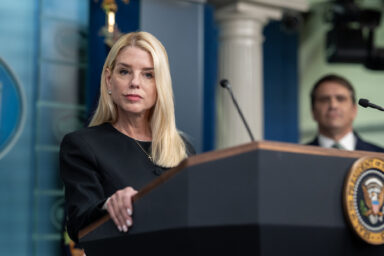To help our readers better understand the historic nature of the 13.4 million jobs added to the US economy in Joe Biden's first term, we put them into context.
|
Listen To This Story
|
With an unemployment rate of 3.5 percent and 13.4 million jobs added since President Joe Biden took office, the labor market is defying expectations and continues to hum. That makes it a bit baffling that more than half of all Americans believe the economy is getting worse even though it is actually growing. Furthermore, the crippling inflation of the past couple of years has eased considerably. Therefore, to better understand the historic nature of the current employment situation, we thought it would be good to put it into context.
The White House is quick to point out that the US economy has never added this many jobs in any president’s four-year term, and Biden is only a bit more than halfway through his. Obviously, the population is also larger now than at any time before, so you need to enjoy these figures with caution.
In addition, it is important to note that it is usually demagoguery when one side or the other claims that the respective president is solely responsible for an economy’s performance. For example, the world’s greatest economic genius could have presided over the US at a time of global inflation, and prices would still have increased. Conversely, the current economy could be run by a toddler and add some jobs.
There are plenty of other factors that play roles in the country’s economic performance. For example, former President Donald Trump’s numbers are skewed by the effects of a global pandemic that crippled trade, tourism, and supply chains. Lots of companies had to lay off workers and, naturally, once things got back to normal, they began to hire again; Biden is the beneficiary in this case.
Still, 13.4 million new jobs is a historic figure.
How historic?
Only four states have a population greater than 13.4 million people.
Or, to put it another way: If every man, woman, and child in the 12 least populous states (Wyoming, Vermont, Alaska, North Dakota, South Dakota, Delaware, Rhode Island, Montana, Maine, New Hampshire, and West Virginia) had been unemployed on Inauguration Day, they would all have jobs now. And, for good measure, you can add the District of Columbia to that list. If you add up their populations, you get to 13.5 million.
Until the 1830s, the US population didn’t even reach that figure. In fact, there are currently 118 countries with fewer than 13.4 million citizens.
Assuming that these people were American men and women of average height, if they were to form a human chain, it would reach from coast to coast (at the country’s widest point) four times.
In other words, that’s a lot of people who now have jobs but didn’t before.
And, while any claim from the White House that this is just “Bidenomics” should be taken with a grain of salt, this is happening under the president’s auspices, and, if he is going to be blamed for bad global economic developments like inflation, he might as well take credit for it.




